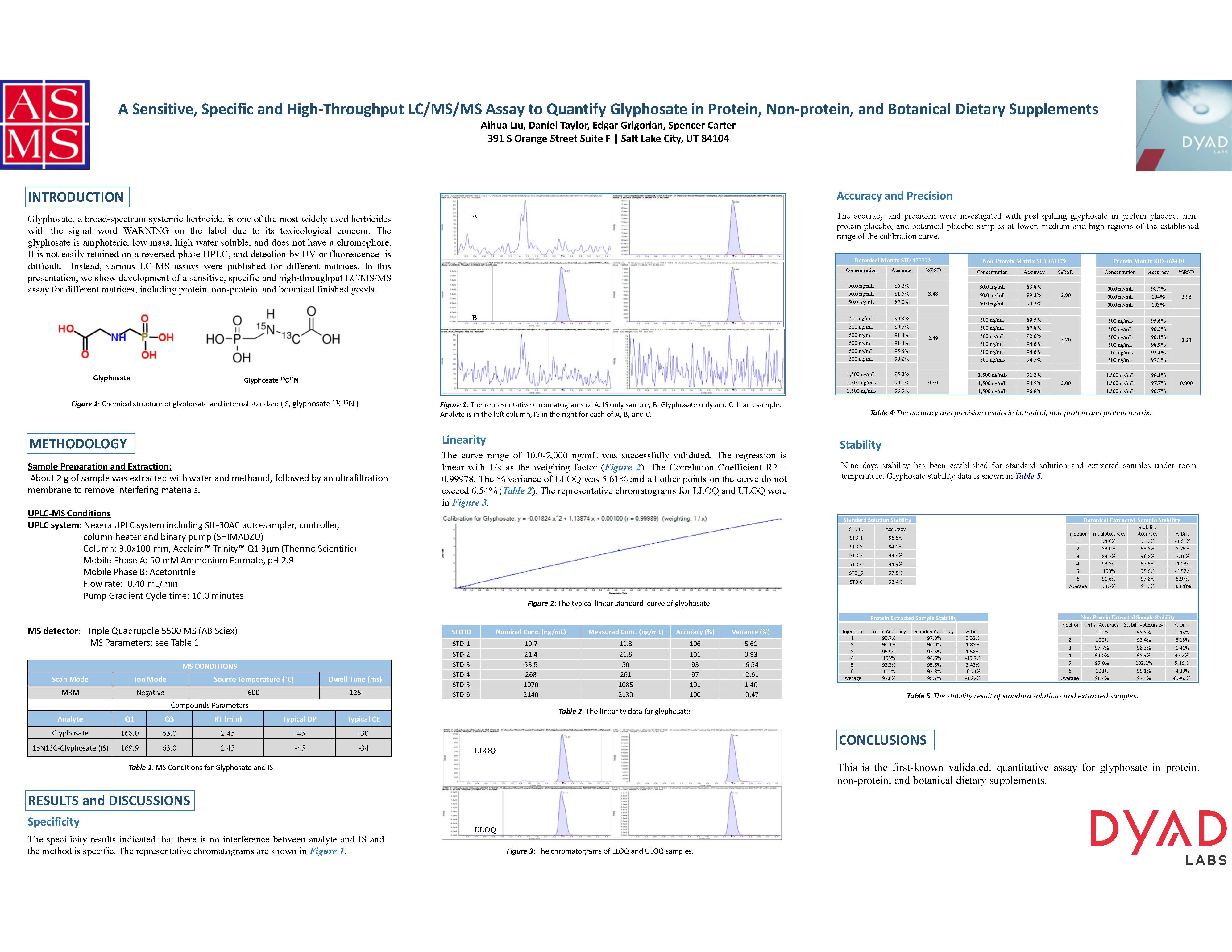ASMS 2018 Glyphosate Analysis by LCMSMS
A Sensitive, Specific and High‐Throughput LC/MS/MS Assay to Quantify Glyphosate in Protein, Non‐protein, and Botanical Dietary Supplements.

Introduction
Glyphosate, a broad-spectrum systemic herbicide, is one of the most widely used herbicides, carrying a signal word WARNING on the label due to its toxicological concerns. The glyphosate is amphoteric, low mass, highly water soluble, and does not have a chromophore. It is not easily retained on a reversed-phase HPLC, and detection by UV or fluorescence is difficult. Instead, various LC-MS assays were published for different matrices. In this presentation, we show the development of a sensitive, specific, and high-throughput LC/MS/MS assay for various matrices, including protein, non-protein, and botanical finished goods.
Methodology
Sample Preparation and Extraction:
Approximately 2 g of sample was extracted using water and methanol, followed by ultrafiltration through a membrane to remove interfering materials.
UPLC‐MS Conditions
UPLC system: Nexera UPLC system including SIL‐30AC auto‐sampler, controller, column heater and binary pump (SHIMADZU)
Column: 3.0×100 mm, Acclaim™ Trinity™ Q1 3μm (Thermo Scientific)
Mobile Phase A: 50 mM Ammonium Formate, pH 2.9
Mobile Phase B: Acetonitrile
Flow rate: 0.40 mL/min
Pump Gradient Cycle time: 10.0 minutes
MS detector: Triple Quadrupole 5500 MS (AB
Results and Discussions
Specificity: The specificity results indicated that there is no interference between the analyte and IS, and the method is specific.
Linearity: The curve range of 10.0-2,000 ng/mL was successfully validated. The regression is linear with 1/x as the weighing factor (Figure 2). The Correlation Coefficient R2 = 0.99978. The % variance of LLOQ was 5.61%, and all other points on the curve do not exceed 6.54% (Table 2).
Accuracy and Precision: The accuracy and precision were investigated using post-spiking glyphosate in protein, nonprotein, and botanical placebo samples at the lower, medium, and high regions of the established calibration curve range.
Stability: Nine days of stability have been established for a standard solution and extracted samples under room temperature.
Conclusion
This is the first known validated, quantitative assay for glyphosate in protein, non-protein, and botanical dietary supplements.